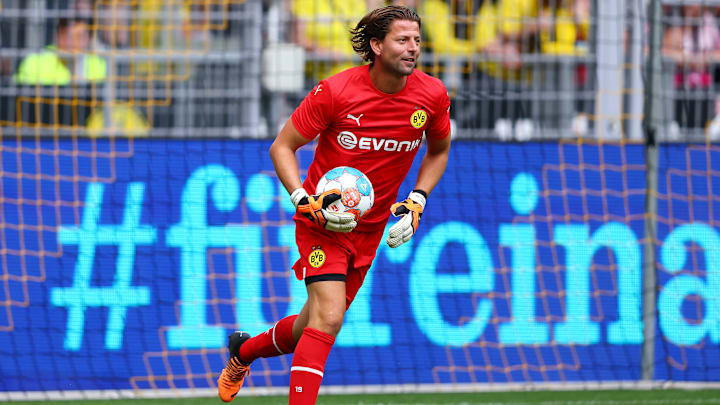Borussia Dortmund competed in Group E alongside The Town FC, Dualing for Lincoln, and, you guessed it, Bayern Munich. The first match was against The Town, a sports club based in San Francisco. It was a slow start for the Black and Yellows as they trailed 0-3 by halftime after a trio of clinical strikes from outside the box. BVB began mounting a comeback in the second-half, pulling a couple back to 2-3, before The Town scored again. Target Score Time saw BVB hold off their opponents until 5-vs-5, when the Town scored again. Game two was against the FC Bayern “World Squad,” which consisted of mostly young players and a couple of veterans. BVB were first to score, but Bayern equalized in the second half and the game entered Target-Score-Time at 1-1. It was a heated game, but Dortmund’s experience outclassed the youngsters’ as one FCB player was sent off for a second yellow. This meant the decreasing number of players on the field would affect the Bavarians worse than BVB. It was 4-vs-3 when Lucas Barrios buried the winning goal. Then, finally, came a must-win game against Dualing for Lincoln who had managed to win both of their group games. It wasn’t meant to be, however, as BVB fell behind 1-4 before Target-Score-Time, a deficit too high to overturn. The match ended 2-5. There were twelve groups, meaning the top eight third-placed teams advanced to the Round-of-32. Borussia Dortmund did finish third in Group E, but their -5 goal differential wasn’t enough to see them advance. Regardless, it was a blast watching them play, and the tournament still had so much to offer.
The Second Iteration of TST was better than the first in every possible way. For starters, the tournament was grander in scale. Instead of 32 teams, the expanded format allowed 48 teams to compete for the $1 million prize. In addition, a second bracket was made for women’s teams to compete. While only eight women’s teams were present, their stakes were just as high, with an equal pot of $1 million for the winning team. Not only does this attract another demographic of fans, but it also makes a strong statement about TST’s values regarding equality and equity. The US women competed with the men last year, notably losing 7-0 to the Wrexham men, but this year, the US women came back and won the women’s tournament.
One complaint shared by many last year was TST’s over-reliance on social media ‘influencers’ in promoting the tournament, which left the competition feeling juvenile at times, with the drama and attitudes that come along with individuals made famous by social media. In order for this tournament to be taken more seriously, TST needed more players who were serious about the game, and that’s exactly what they did this year, and the tournament was better for it. TST found its identity this year.
